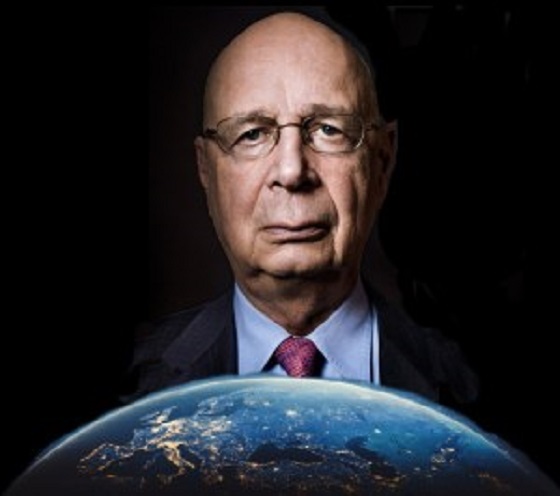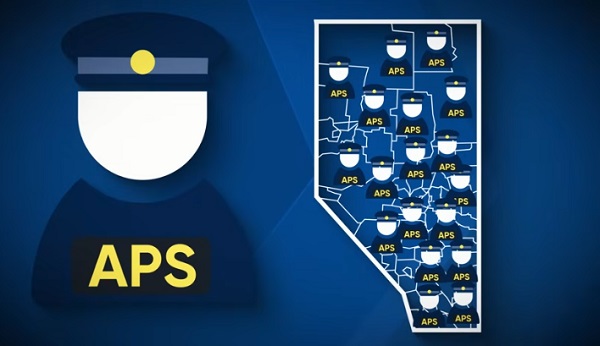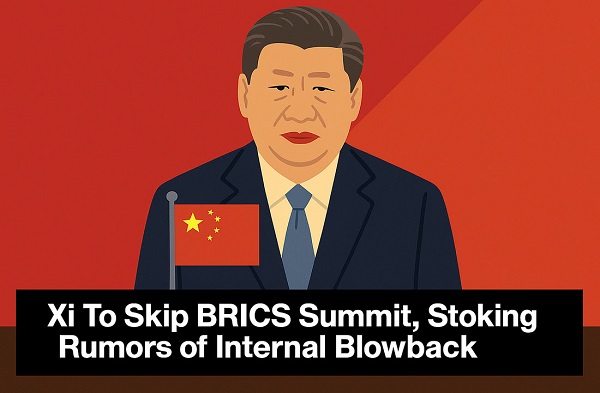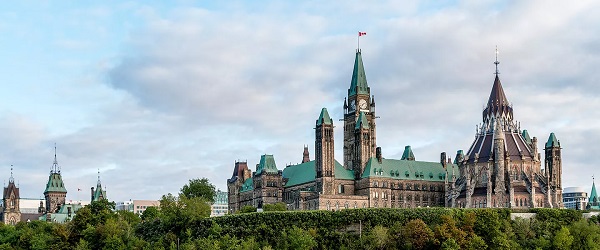Opinion
A few reasons why Molly Bannister Extension is needed, please help.

Guy Pelletier Regional Vice-President of Melcor Developments, at an information session held at the Bower Community Centre stated that if we remove the right of way now then the city would not be able to build the bridge, “When they need it”.
Melcor understands that the city will need the Molly Bannister Extension in the future but they want to make money. The kind of money, that 50 more houses backing onto Piper Creek, would bring.
Melcor is a business and that is understandable, but the city works for the people, the tax payers too. The Molly Bannister Extension has been polled, discussed, analyzed, studied, for decades and the majority of Red Deer residents have always supported it.
Granted there are a few who oppose it, and they have been vocal about it. Now we have big money involved so now there is a sense of urgency about it.
Let us talk about the trail. The trail is actually in the field on the west side of the creek. That would mean they would actually have to tear down trees to put the trail along the creek to go under the bridge. The trail is in the field across from this quarter. The trail would cross the road requiring a crosswalk with flashing lights.
So the option is have hikers, bikers and skaters wait 6 seconds for the flashing lights to come on or have thousands of drivers drive and extra 6 minutes every day.
Air pollution kills 4 million people every year. We encourage walking, transit etc. Now we want thousands of people to drive 6 more minutes every day so a few people don’t have to use a crosswalk.
The developer says removing the right of way will be more park space but in the next breath talks about replacing it with 50 houses backing onto Piper Creek. What these houses won’t be accessed by a road?
In Sunnybrook we have Selkirk Boulevard running along the woods. Deer cross it every day. Traffic slows down and stops for the animals. Even with all the traffic using as a short cut to avoid the 32 Street and 40 Avenue intersection.
If you remove the Molly Bannister Extension, you will most likely tie onto Selkirk Blvd at Springfield’s 3 way stop. Springfield is narrow and has a school but it has direct access to 32 Street. Selkirk is the most likely route as history shows.
We are talking about a 50 year old neighbourhood which was on the top neighbourhood list in Macleans magazine years ago. Now it has sidewalks which need to be weeded because the city cannot afford to maintain.

If you remove the Molly Bannister Extension, you will widen 32 Street to 6 lanes. Traffic will increase from 23,500 cars per day to over 40,000 when the population increases to 188,000. You are spending 3 million dollars repairing a shifted foundation wall on 32 St. near 47 Ave now at 4 lanes. How much will it cost to expand it to six lanes through Kin Canyon, Mountview school’s playground, etc.
You have mentioned a traffic circle at 40 Ave. and 19 St. at possibly 29-50 million dollars? A pedestrian bridge over 19 Street?
If you remove Molly Bannister Extension, what other unintended consequences will there be? Thousands upon thousands of vehicles travelling those 4 extra kilometres every day? For many, many years and decades? Isolating the animals in this wall less sanctuary, unable to roam?
Removing the Molly Bannister Extension is the first step. You know, as history shows, that 80% of the lots will request relaxations. Future traffic may require widening Selkirk Blvd, possibly hooking onto 32 Street at Spruce Drive.
Selective environmental concerns, affects us all, at one time or another. Years ago I would have been happy to remove the road alignment, but I changed with time. The traffic, death rate of animals crossing 32 Street, the noise, the alienation, the effects on seniors and children trying to cross 32 St. The homeless people leaving trash, needles, and furniture and invading our yards and stealing.
What will happen in the future, I do not know, you do not know, so why handicap future councils, future residents and future growth, when you don’t have to.
I will always remember Brian Mulrooney saying to John Turner; “No sir, you had an option, you could have said no.”
The city laid out 2 options but there are other options. You could just say no.
Unfortunately, the impression is that there are councillors who are so set in their ways, determined to remove the Molly Bannister Extension, that facts, reality, empathy, and options will have no effect.

So my question is, given that the majority of Red Deer residents as shown in the largest number of responses the city had received, support the Molly Banister Extension, will council represent the majority or represent the select few?
Thank you.
Business
World Economic Forum Aims to Repair Relations with Schwab

The whistleblower has always been anonymous, and it remains very suspicious that the very organization he created would turn on him after receiving an anonymous letter that they admitted may not have been credible.
World Economic Forum founder Klaus Schwab stepped down from his chairman position at the organization on April 20, 2025, amid accusations of fraud. Our computer had forecast that the WEF would enter a declining trend with the 2024 ECM turning point. This staged coup happened about 37 years after the first Davos meeting (8.6 x 4.3). From our model’s perspective, this was right on time. Now, Schwab and the WEF are working to repair ties.
An anonymous whistleblower claimed that Klaus Schwab and his wife collaborated with USAID to steal tens of millions in funding. The whistleblower has always been anonymous, and it remains very suspicious that the very organization he created would turn on him after receiving an anonymous letter that they admitted may not have been credible. Something like this would never be acceptable in any court of law, especially if it’s anonymous. It would be the worst or the worst hearsay, where you cannot even point to who made the allegation.
Back in April, the WEF said its board unanimously supported the decision to initiate an independent investigation “following a whistleblower letter containing allegations against former Chairman Klaus Schwab. This decision was made after consultation with external legal counsel.”
Now, the WEF is attempting to repair its relationship with its founder ahead of the next Davos meeting. Bloomberg reported that the WEF would like to “normalize their relationship [with Klaus Schwab] in order to safeguard the forum and the legacy of the founder.”
Peter Brabeck-Letmathe has replaced Schwab for the time being, but is less of a commanding force. Schwab’s sudden departure has caused instability in the organization and its ongoing mission. Board members are concerned that support for the organization will begin to decline as this situation remains unresolved.
The World Economic Forum’s annual revenue in 2024 was 440 million francs ($543 million), with the majority of proceeds coming from member companies and fees. Yet, the number of people registered to attend the 2025 Davos event is on par if not slightly exceeding the number of participants from the year prior.
Schwab’s departure has damaged the Davos brand. There is a possibility that the organization is attempted to rebrand after Agenda 2030 failed. The WEF attempted to move away from its zero tolerance stance on ESG initiatives after they became widely unpopular among the big industry players and shifting governments. The brand has attempted to integrate the importance of digital transformation and AI to remain relevant as the tech gurus grow in power and popularity. Those who are familiar with Klaus Schwab know the phrase, “You will own nothing and be happy.” These words have been widely unpopular and caused a type of sinister chaos to surround the brand that was once respected as the high-brow institution of globalist elites.
European Central Bank President Christine Lagarde was slated to replace Schwab in 2027 when her term ends, and all reports claimed that he was prepared to remain in the chairman role for an additional two years to ensure Lagarde could take his place. What changed seemingly overnight that would cause the organization to discard Schwab before he was due to retire?
Schwab denies any misconduct and filed lawsuits against the whistleblowers, calling the accusations “calumnious” and “unfounded.” He believes “character assassination” was the premise of the claims.
I am no fan of Klaus Schwab, as everyone knows. I disagree with his theories from start to finish. Nevertheless, something doesn’t smell right here. This appears to be an internal coup, perhaps to distract attention from the question of alleged funds for the WEF from USAID, or to try to salvage the failed Agenda 2030. Perhaps they will claim that no misconduct had occurred since DOGE did not raise concerns or there is a possibility that those behind the internal coup are concerned that Schwab’s counter lawsuit could uncover new corruption. The investigation into Schwab has not concluded, but after only three months, the WEF would like to wrap it up. It appears that the WEF does not want to welcome Schwab back; rather, they would like to ensure an amicable resolution to maintain both the brand’s reputation as well as the founder’s.
Business
A new federal bureaucracy will not deliver the affordable housing Canadians need

Governments are not real estate developers, and Canada should take note of the failure of New Zealand’s cancelled program, highlights a new MEI publication.
“The prospect of new homes is great, but execution is what matters,” says Renaud Brossard, vice president of Communications at the MEI and contributor to the report. “New Zealand’s government also thought more government intervention was the solution, but after seven years, its project had little to show for it.”
During the federal election, Prime Minister Mark Carney promised to establish a new Crown corporation, Build Canada Homes, to act as a developer of affordable housing. His plan includes $25 billion to finance prefabricated homes and an additional $10 billion in low-cost financing for developers building affordable homes.
This idea is not novel. In 2018, the New Zealand government launched the KiwiBuild program to address a lack of affordable housing. Starting with a budget of $1.7 billion, the project aimed to build 100,000 affordable homes by 2028.
In its first year, KiwiBuild successfully completed 49 units, a far cry from the 1,000-home target for that year. Experts estimated that at its initial rate, it would take the government 436 years to reach the 100,000-home target.
By the end of 2024, just 2,389 homes had been built. The program, which was abandoned in October 2024, has achieved barely 3 per cent of its goal, when including units still under construction.
One obstacle for KiwiBuild was how its target was set. The 100,000-home objective was developed with no rigorous process and no consideration for the availability of construction labour, leading to an overestimation of the program’s capabilities.
“What New Zealand’s government-backed home-building program shows is that building homes simply isn’t the government’s expertise,” said Mr. Brossard. “Once again, the source of the problem isn’t too little government intervention; it’s too much.”
According to the Canadian Mortgage and Housing Corporation, Canada needs an additional 4.8 million homes to restore affordability levels. This would entail building between 430,000 to 480,000 new units annually. Figures on Canada’s housing starts show that we are currently not on track to meet this goal.
The MEI points to high development charges and long permitting delays as key impediments to accelerating the pace of construction.
Between 2020 and 2022 alone, development charges rose by 33 per cent across Canada. In Toronto, these charges now account for more than 25 per cent of the total cost of a home.
Canada also ranks well behind most OECD countries on the time it takes to obtain a construction permit.
“KiwiBuild shows us the limitations of a government-led approach,” said Mr. Brossard. “Instead of creating a whole new bureaucracy, the government should focus on creating a regulatory environment that allows developers to build the housing Canadians need.”
The MEI viewpoint is available here.
* * *
The MEI is an independent public policy think tank with offices in Montreal, Ottawa, and Calgary. Through its publications, media appearances, and advisory services to policymakers, the MEI stimulates public policy debate and reforms based on sound economics and entrepreneurship.
-

 COVID-192 days ago
COVID-192 days agoOntario man launches new challenge against province’s latest attempt to ban free expression on roadside billboards
-

 Energy2 days ago
Energy2 days agoThis Canada Day, Celebrate Energy Renewal
-

 COVID-1919 hours ago
COVID-1919 hours agoNew Peer-Reviewed Study Affirms COVID Vaccines Reduce Fertility
-

 Business15 hours ago
Business15 hours agoOttawa Funded the China Ferry Deal—Then Pretended to Oppose It
-

 Alberta2 days ago
Alberta2 days agoAlberta Next Takes A Look At Alberta Provincial Police Force
-

 Alberta2 days ago
Alberta2 days agoCanadian Oil Sands Production Expected to Reach All-time Highs this Year Despite Lower Oil Prices
-

 MAiD17 hours ago
MAiD17 hours agoCanada’s euthanasia regime is not health care, but a death machine for the unwanted
-

 International2 days ago
International2 days agoPresident Xi Skips Key Summit, Adding Fuel to Ebbing Power Theories










